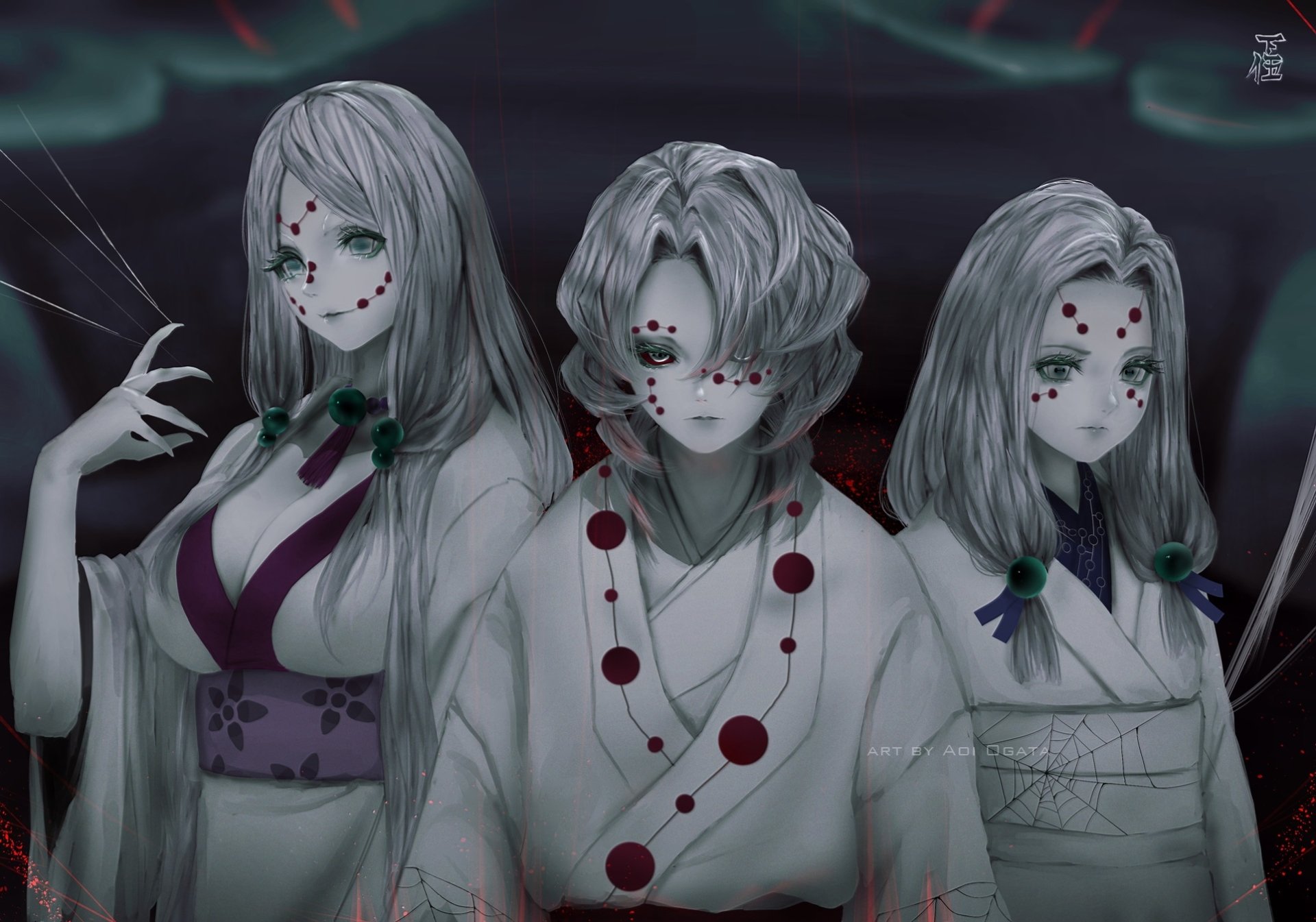The Enigmatic Rui: A Deep Dive into the Antagonist’s Character in Demon Slayer
Greetings, fellow demon slaying enthusiasts and seekers of the enigmatic! Today, we embark on a journey into the dark and captivating world of “Demon Slayer,” where characters are as complex as they are enthralling. One such character that demands our attention is Rui, a memorable antagonist whose tragic past, twisted motivations, and intricate psychology make him a figure both haunting and fascinating. So, let’s delve deep into the enigma that is Rui.
1. The Origins of Suffering

Rui’s story begins with tragedy—a tale of abandonment, rejection, and unfathomable pain. Born into a life of poverty and abuse, his young existence was one of despair. Such harrowing circumstances serve as the crucible from which demons emerge. Rui’s transformation into a demon—a creature of both immense power and unimaginable loneliness—mirrors the cruel injustices he endured. It’s a testament to the series’ exploration of the darkness that shapes even the most malevolent beings.
2. The Facade of Family
One of the most striking aspects of Rui’s character is his twisted interpretation of family. He aspires to create a warped sense of kinship—a demented family forged through manipulation, control, and coercion. This notion stems from his yearning for the affection and belonging he was denied. He forcefully converts humans into demons, compelling them to accept his skewed perception of family, even if it means stripping them of their humanity. Rui’s obsession with forging connections highlights the lengths he’s willing to go to mend his fractured heart.
3. The Tug of Power and Insecurity
Beneath Rui’s veneer of power and dominance lies a deep well of insecurity. His obsession with becoming a member of the Twelve Kizuki—top-ranking demons—serves as a manifestation of his inadequacy complex. This internal struggle is emblematic of the psychological turmoil that plagues him. His need for control often clashes with his underlying fear of being unremarkable, creating a multidimensional antagonist whose motivations are far from black and white.
4. The Threads of Obsession

Rui’s fixation on control, family, and power is visually encapsulated by his use of spider webs—a recurring motif throughout his character arc. These webs symbolize his desire to ensnare, possess, and dominate, much like the grip of his trauma on his psyche. The visual symbolism is hauntingly apt, underscoring his manipulation and weaving a tapestry of deceit and destruction around him.
5. The Tragic End
The climax of Rui’s narrative—the intense showdown with Tanjiro and Nezuko—reveals the fragility beneath his malevolent exterior. As his carefully constructed world collapses around him, his desperation and vulnerability come to the forefront. This stark contrast between his monstrous appearance and his emotional turmoil adds a layer of complexity, urging us to consider the human elements even within the most monstrous of creatures.
6. A Villainous Mirror
Rui’s character serves as a twisted mirror to Tanjiro’s journey. Both characters have endured unimaginable hardships, yet their responses have led them down divergent paths. While Tanjiro’s experiences compel him to embrace empathy and justice, Rui’s tormented past warps him into a creature consumed by his obsessions. This parallel is a powerful reminder of the fine line between heroism and villainy, evoking introspection about the choices and circumstances that shape us.
A Complex Villain for the Ages

Rui isn’t merely an antagonist meant to challenge the heroes; he’s a character designed to challenge our perceptions. His tragic backstory, warped ideals, and unexpected vulnerability converge to create a villain of unparalleled complexity. His presence lingers long after his arc concludes, inspiring us to contemplate the layers that exist within even the darkest corners of humanity.
As you journey through the captivating world of “Demon Slayer,” take a moment to immerse yourself in the intricacies of Rui’s character. His tale serves as a reminder that understanding even the most malevolent of characters requires an exploration of their past, their motivations, and the shadows that shape their actions. In doing so, we gain a deeper appreciation for the rich tapestry of emotions and experiences that define the human condition.
That’s me, Andreea Blaga, author of the blog anime-everything.com. I work as a content creator in the US. I am also passionate about Japanese Anime.


Related post
Character Study: Korra and Aang’s Legacy
In the richly woven tapestry of the “Avatar” universe, the characters of Korra and Aang...
Jul
Islands of Wonder: Exploring the Unique Geography of One Piece
Enter the vibrant world of One Piece, a beloved manga and anime series created by...
Jul
Unveiling ‘The Eminence in Shadow’: A Dive into its Intriguing Premise
“The Eminence in Shadow” is a light novel series written by Daisuke Aizawa and illustrated...
Jul
Dragon Ball Z: A Cultural Phenomenon Through the Ages
Since its debut in 1989, “Dragon Ball Z” has become a cultural phenomenon that transcends...
Jul
Unleashing the Chainsaw: A Deep Dive into Chainsaw Man’s Gripping Plot
In the realm of dark fantasy manga, few series have captivated readers quite like Tatsuki...
Jul
Aang’s Journey: From Reluctant Hero to Avatar of Peace
In the world of animated series, few have captured the hearts and minds of viewers...
Jul